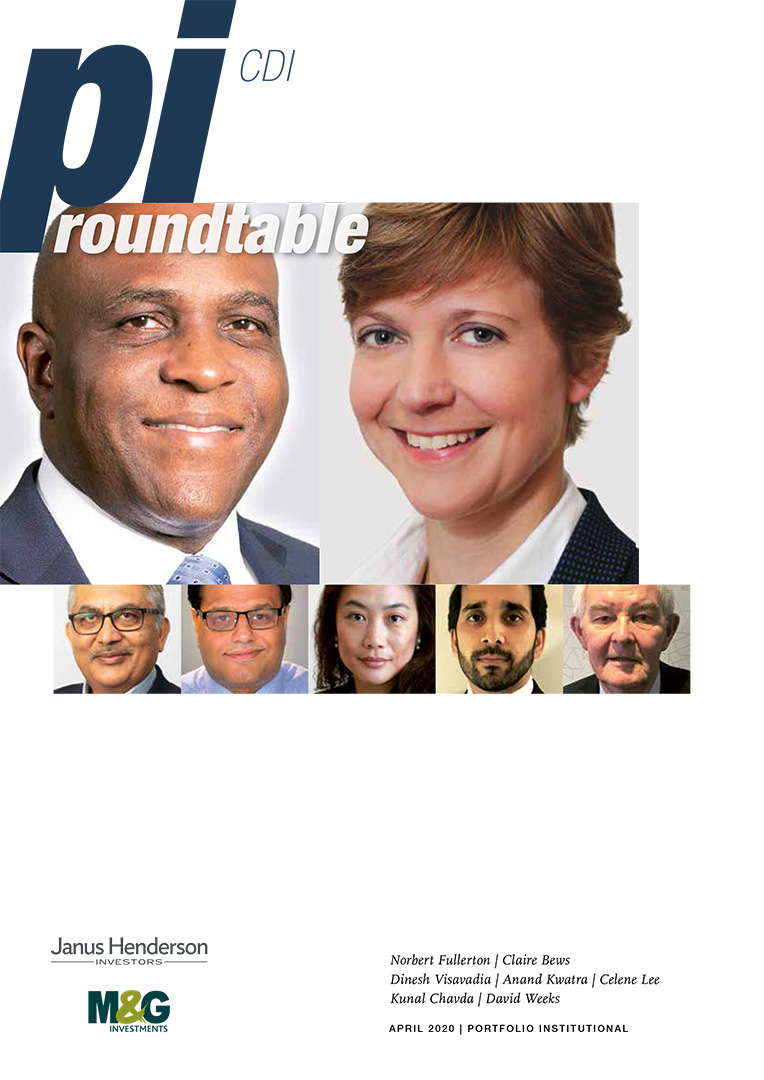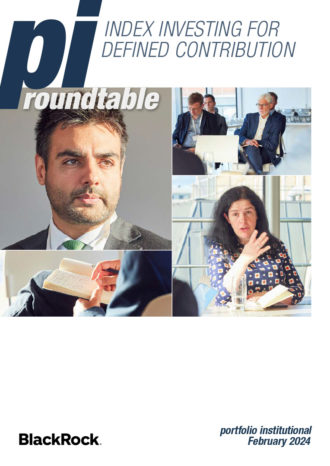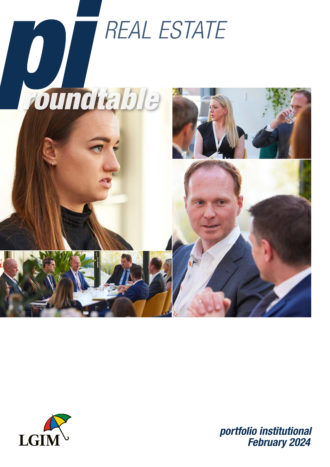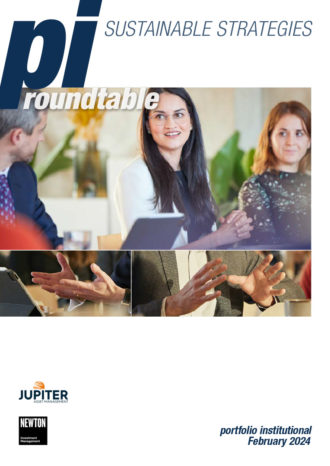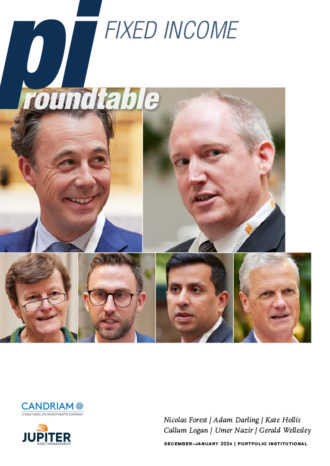Cash-flow driven investing
The wisdom of fixing the hole in your roof while the sun shines has been laid bare by the Covid-19 outbreak.
Volatility and warnings of a downturn that could be deeper than 2008’s crash have hit liquidity. This comes at a difficult time for final salary pension schemes, with almost three-quarters (73%) not generating enough cash to pay member benefits.
The markets may have changed, but for defined benefit pension schemes the strategy has not: generate enough cash to pay member benefits in full and on time.
Where cash-flows are not fully matched, schemes may have to sell assets to fund their obligations at a time when valuations have declined.
Meanwhile, those who fixed their roof when the sun was shining by matching their long-term liabilities to cash-generating assets could perhaps sleep a little easier during such economic turbulence. This is, after all, believed to be a short-term disruption with the added benefit for those holding cash to perhaps take advantage of widening spreads to improve their cash-flows.
But investors are being advised to proceed with caution. What if this short-term disruption has longer-term implications? What if defaults in the bond, private debt or property markets rise?
Such events could lead to downgrades on investment-grade debt and force liabilities higher, so schemes may have to invest to match their revised liability profile.
Institutional asset owners are certainly living in interesting times and this supplement looks at what could lie in wait for those following a cashflow driven investing strategy.

From Top to bottom: Mark Dunne, Editor , portfolio institutional / Claire Bews , Fund manager, M&G Investments / Norbert Fullerton, Head of institutional client strategy, EMEA , Janus Henderson / Kunal Chavda, Director, fixed income, bfinance / Celene Lee, Principal and senior investment consultant, Buck / Anand Kwatra, Investment actuary, Phoenix Group Capital / Dinesh Visavadia, Director, Independent Trustee Services / David Weeks, Co-chair, Association of Member Nominated Trustees
A lockdown cannot stop portfolio institutional from taking an in depth look at the issues affecting asset owners. This month we put cash-flow driven investing under the microscope and what a time it is to discuss what is happening in this market. We invited a trustee, an insurer, asset managers and consultants to an online forum to debate if CDI strategies are protecting institutional investors from market risk and if this is a good time to pick up some bargains.
Watch the podcast discussion here
portfolio institutional: How has Phoenix reacted to the performance of the financial markets in the past month, Anand?
Anand Kwatra: There has been short-term volatility that may have some longer-term implications. However, it does not fundamentally change what we have to do, which is source long-term investments to match our long-term liabilities.
There may be a change in how we assess credit risk in those investments. We are looking at our liquid portfolio and trying to assess which exposures may be prone to a default or downgrade risk, and then decide if any rebalancing or mitigation actions are required.
On the illiquid side, the opportunity set is being affected. Various deals are being postponed as issuers are tentative about coming to market. For example, we have seen that happen in the social housing sector, which is a popular investment for matching long-term liabilities.
There is concern about liquidity in the corporate bond market. Can you buy those bonds at the prices you see on the screen? That is an issue. You are also seeing, in inverted commas, potential opportunities. Spreads are widening in sectors that are often considered relatively low risk, but you need to be cautious in this environment.
PI: Dinesh, are the schemes you work with approaching this environment with caution or as an opportunity as spreads are widening?
Dinesh Visavadia: The schemes which are partway through their journey are saying, let’s pause before we take the next step until we get some stability in the market. Opportunities are rare, so we need to be selective in terms of whether we carry on with this strategy and complete it in a sensible way.
We are not seeing new CDI strategies being implemented as it is not possible to buy all the investments needed to fully implement such a strategy.
Trustees are naturally conservative with uncertainty and volatility.
PI: David, is the turbulence we have seen in recent weeks giving your cash-flow focused members less sleep than usual?
David Weeks: To some extent, there is a generational aspect. Younger trustees are looking for instruction from the regulator, whereas members who are longer in the tooth can look back to 1987 and understand that if you take a longer perspective and allow things to settle down then some of the immediate pressures will disappear.
It is a quite volatile position at the moment, but the generational aspect may be a key element in how people respond to that.
PI: Claire, are asset owners concerned about liquidity at the moment?
Claire Bews: There has been a significant impact on liquidity in the market during the current crisis. We are finding that brokers are taking much less risk onto their books.
For my CDI clients who are well matched, liquidity is less of an issue as they shouldn’t become a forced seller. They should be able to sit back and watch this volatility and perhaps take advantage of it.
PI: Norbert, if schemes are well matched but the world is heading into a recession, as the IMF says it is, should those schemes be worried about default risk?
Norbert Fullerton: The beauty of CDI is that you are not too worried about short-term market volatility because you are mainly invested long term in investment grade fixed income assets on a buy and maintain basis. If your cash-flows are reasonably well matched or over-matched you can ride this out.
It is more of a challenge for underfunded pension funds whose cash-flows are not that reasonably well matched. They are more exposed to market risk and they might need to sell assets to meet cash-flows. There may be opportunities to be nimble, if they can, to take advantage of widening credit spreads.
PI: Celene, what conversations are you having with your clients during such a turbulent time?
Celene Lee: The conversations with those who are managing their CDI strategy are easier. Apart from understanding market volatility and what has happened, they are in a good position.
That said, we are seeing unprecedented amounts of cash demands which, to some extent, people have not anticipated. Employers are also switching off or deferring contributions, which is quite unusual.
This reinforces the need to be ready during normal times with a CDI strategy so that you are in a much better position to weather unexpected events or cash demands when we are going through turbulent times.
There is nothing like a turbulent market for people to realise that they need to manage cash-flow and liquidity better. People are aware that they need to do it, but not everyone buys into it until it happens.
PI: Kunal, how should cash-flow focused investors react to this turbulence if they are not well matched?
Kunal Chavda: I have someconcerns about BBB risk. Investors already in CDI buy-and-maintain matching strategies need to engage with their managers to understand their position.
One of the problems in the past couple of years has been that spreads have been incredibly tight, which has led to a lot of matching strategies to allocate a bit more to that BBB spectrum.
It is not just BBB that is impacted by this; it is the entire investment grade range. So whilst you are in a matched strategy and don’t need to worry about the market, the implications of what’s going on will be more far reaching than just the short-term credit which has been impacted in the past few weeks.
A lot of the investment cases for issuers have been particularly challenged and have sometimes changed. Whereas you might have been comfortable with an A-rated credit a year ago, potentially that is not what you want to hold for five to 10 years at the moment.
On the other side of it is new issuance and the maturities coming up in the next couple of years within IG, which is a bellwether for the new issuance markets. We are seeing a lot of new issuance coming, particularly US investment grade. A lot of that is on the back of maturities coming up in the next year to two and companies hoarding cash to try and weather this storm.
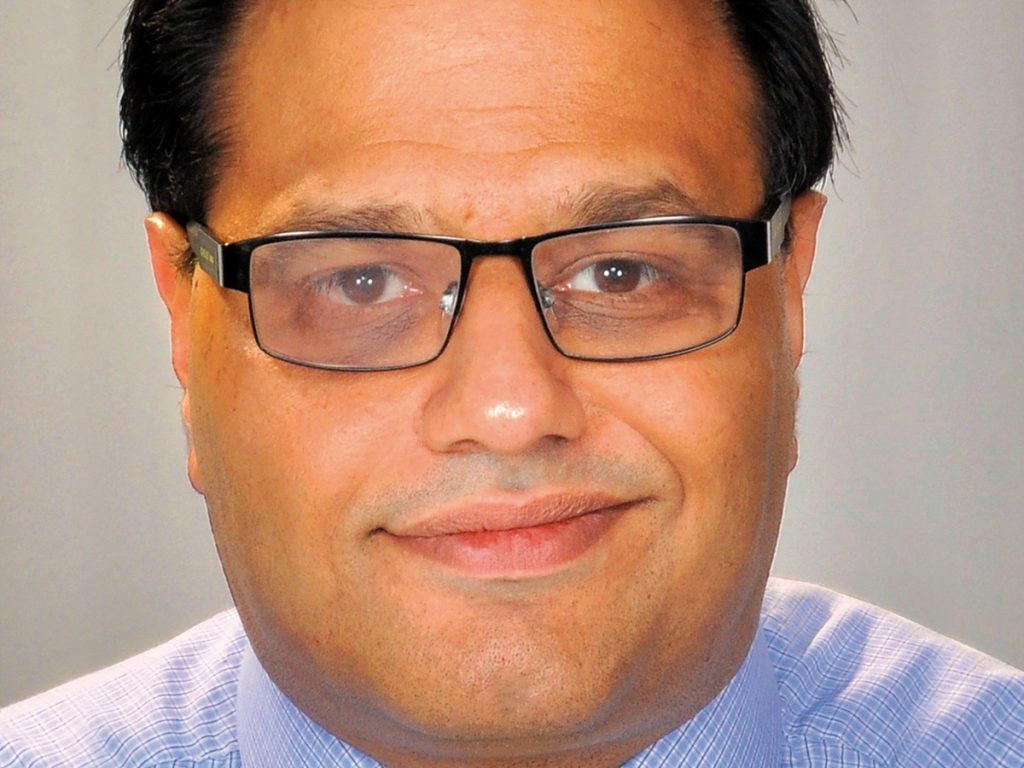
Spreads are widening in sectors that are often considered relatively low risk, but you need to be cautious in this environment.
Anand Kwatra, Phoenix Group
So for investors that can implement a CDI strategy at the moment, there are some real opportunities. You can pick up some high-rated credits with much wider spreads than they had a year or two ago.
At the same time, you need to be cautious. Take selective measures, not particularly on a sector basis but on an issue-by-issue basis. There are sectors that that are troubled and directly impacted by what’s going on but they could still have good individual issuers that you would be happy to hold. So it’s down to thorough bottom up due diligence for managers.
PI: Anand mentioned credit risk. How easy is it to look at an asset and assess its credit worthiness at the moment?
Fullerton: It’s too early to say. One of the things we are looking at on the fixed income desk is a true assessment of illiquidity. It is difficult at this point to come up with any sensible conclusion because things are changing daily. But, so far, the riskiest areas of the market – high yield and bank loans – have been among the hardest hit. Coming out of this crisis, they may also present the best opportunities.
PI: How are you approaching new issuances these days, Claire?
Bews: Fundamental research is crucial right now. I am fortunate to have a huge team of analysts to do that for me.
We are taking it on a case-by-case basis and looking for assets with robust balance sheets.
We may purchase bonds in the knowledge that there is a strong likelihood of a downgrade from A to BBB. If that is priced in and we are happy with the underlying credit fundamentals we will selectively buy those assets.
There are a lot of opportunities in the new issue market that are coming at attractive levels, particularly in the US. These are companies that are seeing an opportunity to bolster their balance sheet to whether the storm.
PI: Anand, is this how you approach fixed income assets?
Kwatra: As we have heard, there is an element of pausing. There is also an element of going back to the fundamentals. In a CDI strategy you need to think over the long term and want investments which are going to deliver the cash-flows when you need them. For example, this leads us to consider government-supported sectors, such as local authorities and social housing within the strategy.
We are placing a lot more scrutiny on the more cyclical investments, and that’s where we are looking at the liquid portfolio to see if any rebalancing is needed.
A comment was made earlier about the spread widening compensating for downgrade risk. That is something we are thinking about. For example, we have seen spreads widen in the social housing sector, which was already on a potential downgrade trajectory. You could argue that those investments could deliver strong fundamentals over the long term and any short-term downgrade risk is now priced in.
PI: What assets are proving popular in CDI strategies?
Visavadia: We can fit the entire spectrum of theliquid credit market in a buy and maintain strategy. It is just a question of what return a scheme needs.
On the illiquid side, ground rents and infrastructure debt are the typical asset classes that I am seeing at the moment.
Weeks: One of the issues concerning trustees, especially of smaller schemes, are unanticipated cash demands. One or two big putative pensioners who want to transfer out can make a significant difference to the scale of things, so people are looking at the potential timing of that.
At the other end of the spectrum, trustees are nervous about property with funds potentially closing, the implications of what could be quite significant structural changes in the economy like the downgrading of the office and retail sectors.
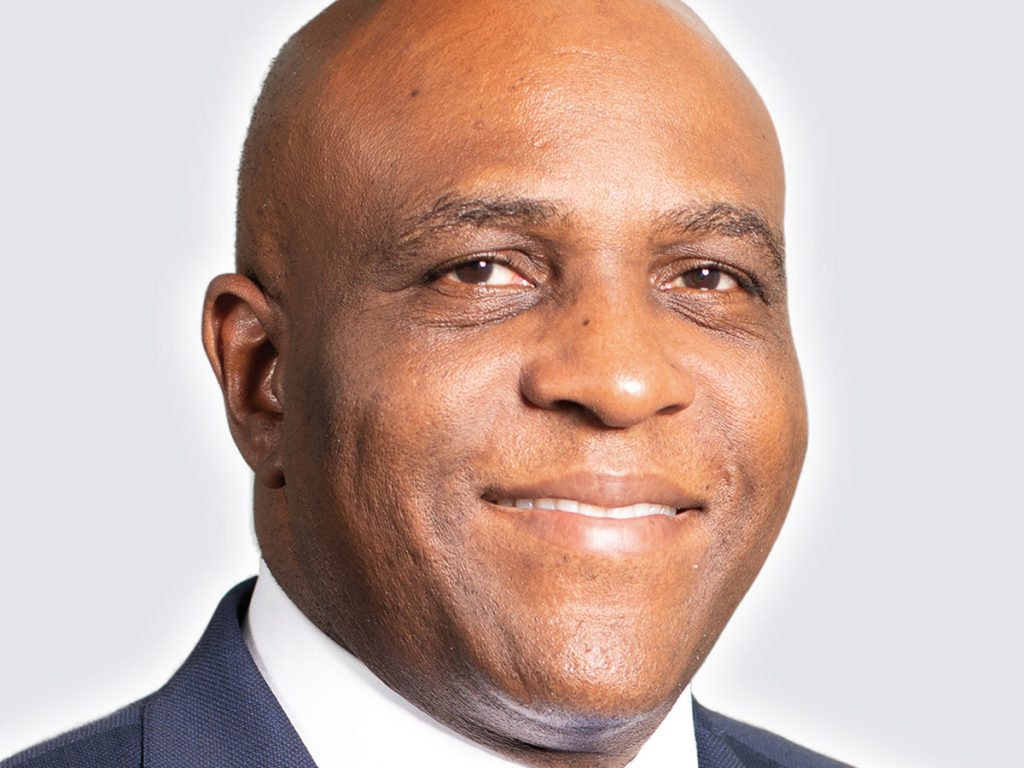
If your cash-flows are reasonably well matched or over matched you can ride this out.
Norbert Fullerton, Janus Henderson
Kwatra: The build-up of property exposure has been commonly cited in the insurance sector over the past couple of years. One way to mitigate that is ensuring appropriate diversification across assets like equity release, social housing, real estate, etc, because the property risk is going to come through in different ways and affect each investment slightly differently.
PI: That is an interesting point. Investors were buying real assets because they were told they could get good quality repeatable cash-flows. Now that there’s disruption in the markets, are those assets living up to the hype?
Fullerton: On the real assets side, because you do not see daily fluctuation in liquidity levels, pension funds are holding them on a wait and see basis. They are investing for the long term. Some real assets, such as property, have suspended dealing due to uncertainty around valuations but are still providing income.
One of the other things I have been seeing is some pension funds, because they don’t have the insurance regulation requirements, are taking slightly more risk and investing in, for example, high quality defensive equity income. Even though it’s not contractual income, there’s a long track record of reliable income coming through and it’s less volatile than the regular stock markets. So some pension funds are starting to invest in it. However, it’s too early to tell how this asset class will perform during this Covid crisis.
Lee: It comes down to what asset classes count as CDI. The key word here is contractual.
Apart from those running a low risk, almost quasi annuity book-type of pension scheme, many still rely on some degree of growth. It may not be equity type of growth but somewhere in between that and a hybrid asset.
We have seen that in recent weeks, even some of the lower risk, private debt instruments that were going to distribute decided not to. So the key question is to what extent you can rely on the income being paid. That’s where schemes that rely on growth will have to allow for the fact that guaranteed income has a price to it.
You can’t have a guarantee and very high returns. If you need a high level of certainty of income, then you are going to have a low return. That moves us into the spectrum of long-lease property.
There will be times when contractual income may not be as contractual as people thought. That’s something you have to allow for and understand that even within a CDI strategy, there will be a mixture of assets. You cannot have your cake and eat it.
Weeks: The balance changes between income guarantees on the one hand and a high return on the other. We may see some changes in that, and trustees will be keeping a close watch on what the trends are as they develop.
Visavadia: The CDI strategy only came into the scenario not long ago. We have not been doing CDI in pensions for as long as insurers have.
As schemes have matured and become better funded CDI was introduced to those on a route to buyout or buy-in.
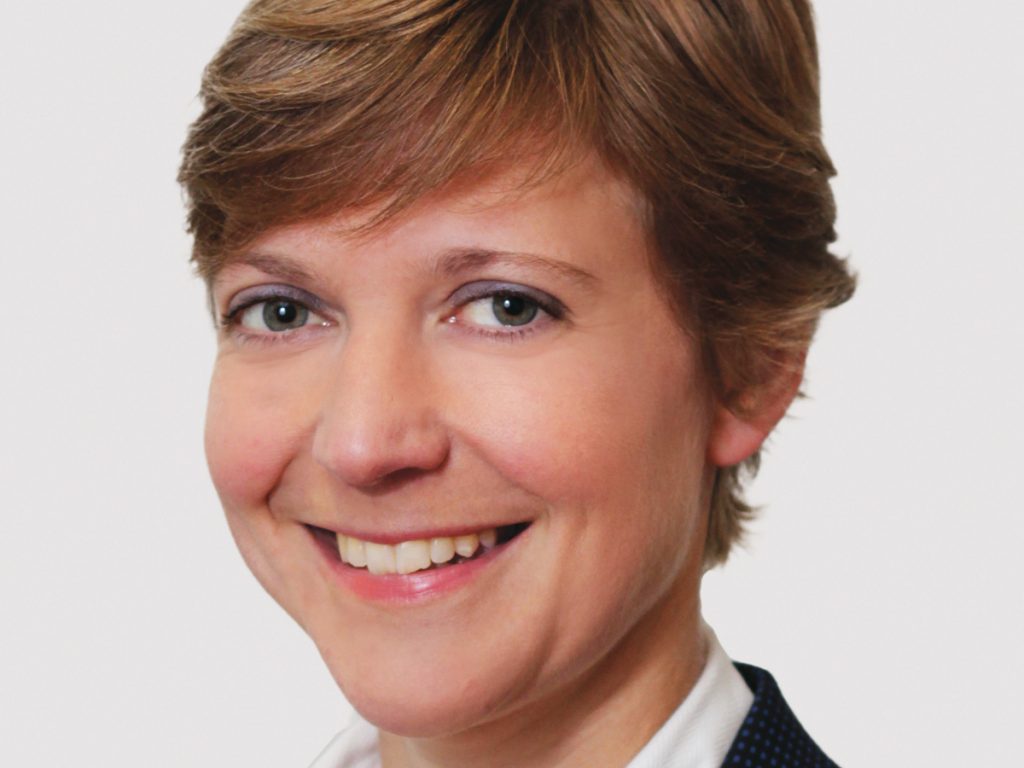
Fundamental research is crucial right now.
Claire Bews, M&G Investments
What has happened in the meantime is that the components that make up CDI strategies have become more sophisticated. This shows good innovation of the asset management industry. From a diversification standpoint, it is also proving challenging to establish what a CDI strategy’s underlying risks are. That is a challenge that concerns me as a trustee.
PI: I do not associate equities with CDI, but some listed companies have been progressive dividend payers. Are equities being included in such strategies?
Bews: Assets in CDI strategies should have contractual cash-flows, or as contractual as you can make them.
Clearly, equities do not have contractual cash-flows and we are seeing that now as dividends are being cut, not just by banks but across many sectors as companies are quite rightly conserving cash. There is no place for equities in a CDI strategy.
Kwatra: The whole point of a CDI strategy is to give you the cash-flows to pay your liabilities. This is why insurance regulation won’t allow equities to be held in an annuity fund.
When we see new investments with an equity-like component, we have to separate the equity component from the fixed cash-flow component. We are only allowed to hold the fixed cash-flow component within the annuity fund, while the equity-like risk must be held somewhere else.
PI: Should CDI assets be in the public or private markets?
Bews: Private assets generally have contractual cash-flows. They can bring benefits that are not available on public markets. Returns here have been coming down, but they can offer higher yields for lower risk.
Many people have mentioned the difficulty in investing for cash-flow at the long end of the markets and private assets allow you to add some diversification there. In the public markets there are fewer issuers issuing for 30 or 40 years.
Chavda: It also depends on the ability of schemes to access those investments on the private spectrum. Larger schemes have the governance budgets and the ability to take on those strategies, smaller schemes don’t, necessarily.

There is nothing like a turbulent market for people to realise that they need to manage cash-flow and liquidity better.
Celene Lee, Buck
There has been the introduction of liquid versions of private asset vehicles, which can be accessed by smaller schemes. But these are still early days.
Long duration assets like infrastructure debt, for example, can help pad out long-dated liabilities mixed with medium and short-term matching through public markets.
Don’t forget that there is a lot of diversification through the fixed income spectrum if you are looking at the entire asset class’ availability through multi-asset class approaches. So there is a lot available to schemes.
Fullerton: There is a wide spectrum in public and private assets. On the public side, global fixed income is a broad, deep and wide market so there are more than enough asset classes to provide diversification.
I have held many conversations with trustees over the past couple years where they have been struggling to find assets at the right price that generate income. Defensive equity income has helped to provide some ‘alternative’ income. Whether this asset class qualifies as CDI or just a part of their wider portfolio is something to be debated.
When you are fully funded and fully matched, you want a low risk strategy. Having a good diversified mix of assets that produce contractual income is the portfolio you need across private and public sectors.
Lee: When we think about what goes into the CDI box, there will be varying degrees of opinion and different shades of contractual income, such as the traditional buy maintain credit and the long-lease property-type assets, for example. One of the things we find challenging is that in this box you can probably have three to five asset classes.
Schemes that follow a CDI strategy tend to be more mature and better funded. Therefore, what they want is lower governance, not managing three to five types of fund, but somebody who is good at managing each asset class.
Kwatra: An interesting aspect about using private debt within CDI is that you can negotiate or structure the deal at the outset to create the cash-flows you need. For example, housing associations regularly issue 25- or 30-year bullet bonds, but on the private side you can negotiate something slightly shorter and amortising that is perhaps a better fit for your liability and credit risk profile.
Visavadia: That’s an interesting point. I always worry about that in private debt because while the income flows it is not always predictable as to when it comes in. So it is good to hear that you can amortise these opportunities on a more predictable way.
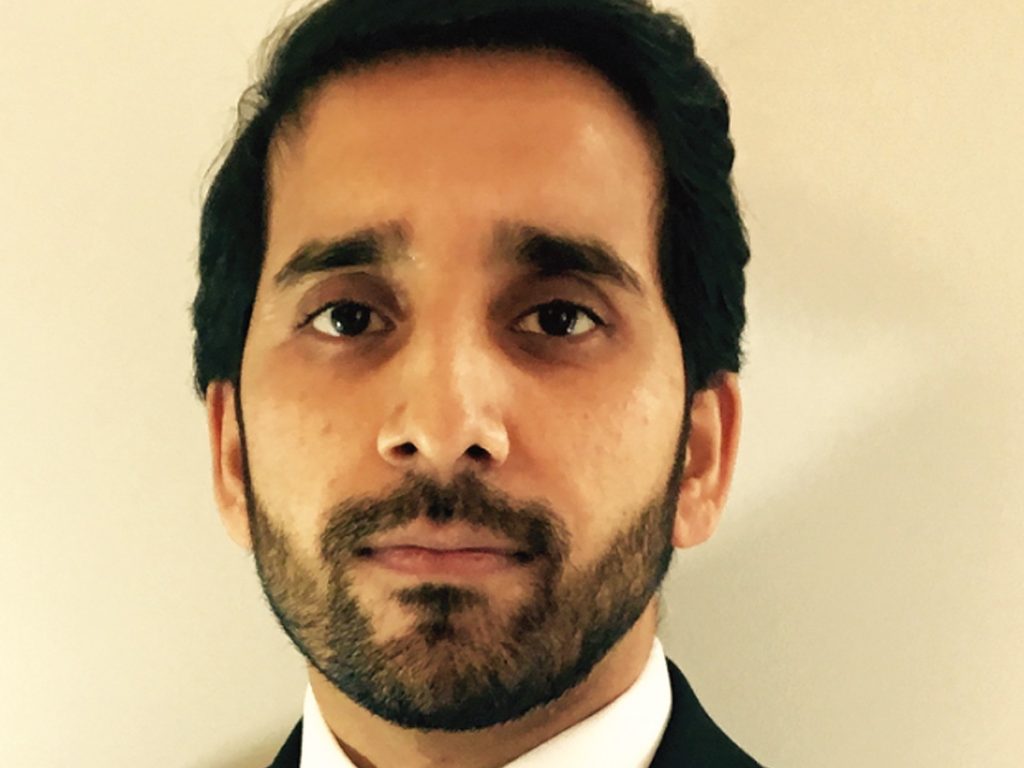
A lot of the investment cases for issuers have been particularly challenged and have sometimes changed.
Kunal Chavda, bfinance
Kwatra: That’s one of the attractions of private debt. It is not just about the illiquidity premium. There is also an opportunity to tailor an asset to fit the profile you require as an institution.
Visavadia: Is that opportunity available to smaller schemes?
Kwatra: It is afunction of your buying and negotiating power and your ability to transact. In addition, it is also a function of how willing the issuer is to meet in the middle ground.
PI: Is it better for an institutional investor to be cash-flow aware or cash-flow matched?
Visavadia: There is no right answer. If you have a well-funded scheme on a short journey to buyout then a cash-flow matched position might work very well. If you have a less mature scheme the longer end of the investment becomes quite challenging. The opportunities may not be there to fully match it, but just being aware of it and a partial match would be just as good, in my opinion.
Bews: We should remember that pension scheme liabilities change every three years. So, there is redundancy in matching very closely, particularly at the longer end. Every scheme should be cash-flow aware and have some idea of what their cash-flows are and of their plans to meet them.
The more mature schemes can try to be cash-flow matched, but liabilities change and being 100% cash-flow match is not necessarily in any scheme’s best interests.
Weeks: I cast my vote for cash-flow aware. The variations are considerable, so you need to be aware. As for matching, that is more a matter of fine judgement.
Key factor in these considerations is what is the strength of the employer’s convenient. Our members say that employers are reserving their position. They have the opportunity of having more flexibility from The Pensions Regulator and they are working out how that might apply in practice.
Fullerton: If you are a pension fund with only pensioners then you can be more reliant on the liability profile and be more matching with your cash-flows. But for schemes with non-pensioners, the liabilities are sometimes changing daily. With pension freedoms and bulk transfers, it is difficult to predict what the cash-flows are going to be over the next six months.
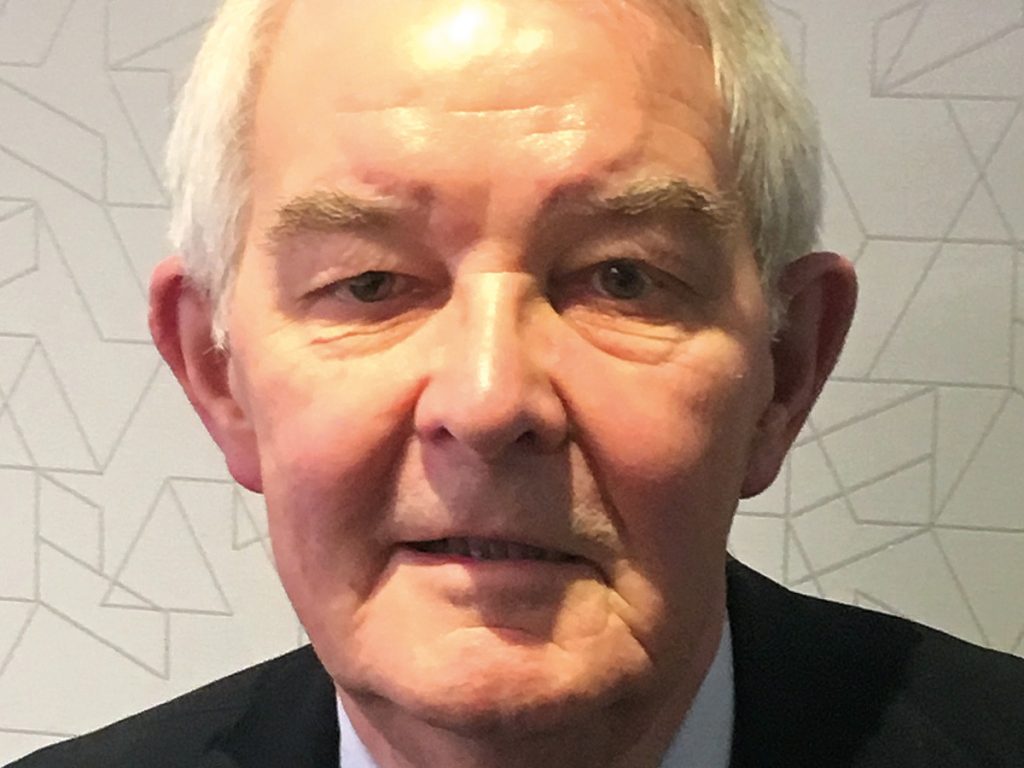
One of the issues concerning trustees, especially of smaller schemes, are unanticipated cash demands.
David Weeks, Association of Member Nominated Trustees
So some form of cash-flow awareness and accessing sufficient cash-flows, slightly more than you need if you can afford it, is preferable. Keep refining those cash-flows and reinvest if you need to.
There are, of course, risks but there’s no point being precisely cash-flow matched when there are so many uncertainties, especially when most of the liabilities are based on actuarial assumptions.
Kwatra: From an insurance perspective, we are forced to be more cash-flow matched rather than just cash-flow aware. The PRA tests will force us to be absolute or duration matched within certain tolerances.
I can understand that for pension schemes, whether you are cash-flow aware or cash-flow matched, depends on individual circumstances.
Flexibility is needed to cope with changing assumptions and liabilities, as previously mentioned. Even if you have a cash-flow matched buy and maintain strategy, it should not be a set and forget strategy. As market and credit conditions change, you might want to engage in some relative value trading, whether to uplift the yield slightly on your portfolio or to buy into better quality names.
It’s important in a cash-flow driven strategy to make sure that you have enough liquidity to employ that flexibility – for example, by not being invested in too high a percentage of illiquids.
Lee: I see cash-flow aware and matched being the same thing, but on two ends of the spectrum. If you are precisely aware, then you are cash-flow matched.
I have schemes that are less mature, have a growth-orientated strategy but are cash-flow negative, which is quite unusual. I would put them in a cash-flow aware category, not because they don’t believe in cash-flow matching, but because their overall portfolio risk and return profile requires them to have a high growth content but also manage cash-flows. They are in a halfway world where they have not chosen to be cash aware, but it’s where they happen to be because of their overall circumstance.
PI: Most defined benefit pension schemes are working towards an endgame and that seems to be typically a buyout. If the markets don’t recover quickly from the current disruption will it impact those plans?
Visavadia: From my experience, it is nice to have a goal, an ambition and a target. I just worry that we may not necessarily get to our goal because, bearing in mind that if all schemes in the UK want to do the same thing, by the time you get to the goal will the pricing be right. I just have a question mark in my mind.
At the moment, I don’t see the target period lengthening for those schemes which are on a journey path. They are already invested in it and have to run it out to make sure that they manage the risk in the process.
No new strategies are being implemented because the situation is volatile.
Fullerton: There are a range of scenarios, but schemes that are fully hedged on interest rates and inflation, are reasonably well funded, cash-flow matched and are targeting buyout in five years or so are probably sitting relatively pretty.
I saw a survey recently that said roughly a third of pension schemes are targeting buyout, but most pension funds are targeting self-sufficiency. Many sponsors cannot afford to stump up the extra cash to buyout. At this point in time when they are cash-flow strapped, and markets are in turmoil, these companies are working with trustees not towards buyout, but targeting something that is more affordable and low risk.
Lee: People often talk about having a target buyout in X number of years, but the reality is that while it is good to have a plan, the world will evolve the way it will evolve and you may not get to where you want to be because of circumstances outside of your control. For example, I have heard people say that you can target buyout in five years if you take more risk. Can you imagine if six months ago somebody took more risk? They would now be behind plan.
It’s not just thinking about the plan or talking about targeting buyout in X number of years but looking at market conditions and deciding if it is practical or not.
Fullerton: It seems interesting that some pension schemes are taking a whole lot more risk to end up in a no risk position.
PI: How is ESG being factored into CDI strategies?
Visavadia: Theconversation initially started with ESG mainly focusing on equities, but now as more and more schemes are investing in credit, that conversation is spilling over into the credit market.
I’m finding that there’s a lot of conversation happening around ESG when building and constructing a CDI portfolio. I understand that in the credit space there’s a lot more engagement on ESG, which is quite a good idea. So yes, there is a lot happening in the ESG space.
The question is, do we have enough visibility on that at this point? I’m not so sure. That should come in the next 12 months or so as more and more work is done on reporting and how do you meet your regulatory duties in that area. Talking to them informally I feel there is a lot of work going on in the background on ESG.
PI: Claire, is this something that your clients are talking to you about when moving into credit?
Bews: Absolutely. We talk to our clients regularly about ESG and in the past two or three years it’s become an important part of our investment process.
Our analysts take ESG factors into account when doing their fundamental research. These are flagged to portfolio managers, whether or not they are material, along with the creditworthiness of the issuer. That allows fund managers to incorporate most ESG factors into portfolios.
We have a lot of information on that and it’s only going to get better in the next 12 months. For our largest clients we can build bespoke portfolios that take ESG factors into account. We have clients, for example, who want to exclude issuers with a high weighting of their EBITDA to oil and coal. We can do that because we have that information.
Fullerton: A lot more clients have been focused on ESG, particularly within credit markets. Perhaps almost coincidentally, pension funds that designed their CDI strategies with ESG in mind, would have been a bit more resilient during this crisis. Carbon intensive businesses that have not performed well over the past month or so, like travel, oil and energy, have seen a greater decline in their market values.
Chavda: Clients are increasingly aware, particularly after the requirements for reporting that were brought in last year, of how managers are incorporating this. Managers have been talking about ESG for a while but is becoming more meaningful.
The focus of ESG in fixed income is on the governance element, which would have been in place for some time, particularly with the analysis that most credit analysts undertake. The focus on the E and S can vary between managers and approaches.
There is going to be an increasing focus on ESG, particularly given recent events. There’s a lot of talk at the moment about focusing on renewable energy going forward. So, I would imagine, particularly given the timeframes that our pension schemes are investing in, that ESG will be an increasing factor.
Weeks: If you have the immediate threat at the gate, you have to deal with the immediate threat. That doesn’t mean to say that longer term threats don’t remain, so ESG should remain firmly on the agenda for the future.
Kwatra: ESG fits in a CDI strategy because you are investing for the long term. The ESG due diligence would help you measure that long-term risk. Businesses that have sound governance and sustainability models are more likely to deliver those cash-flows in the long term as ESG trends evolve.

